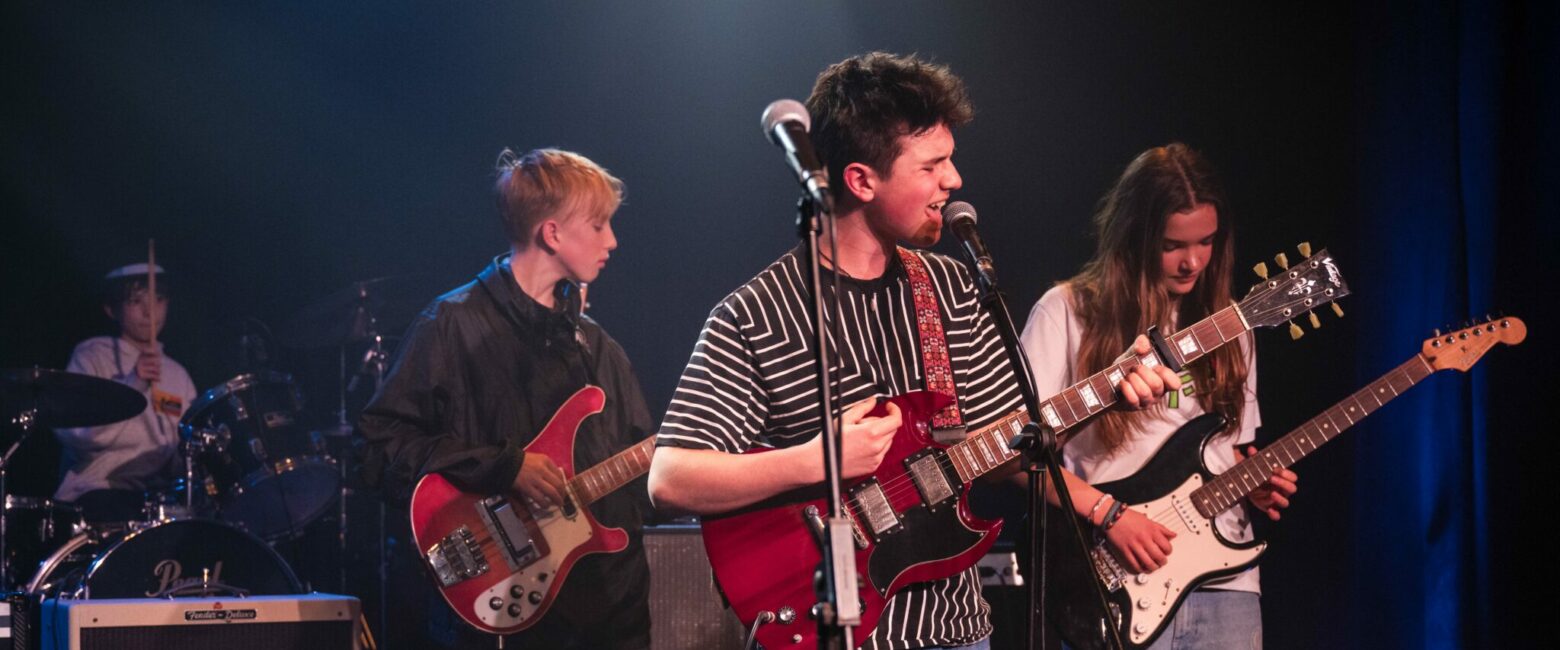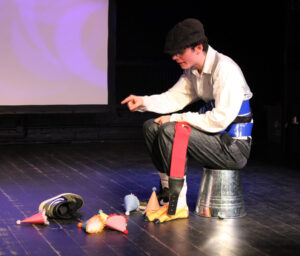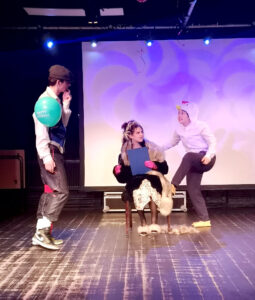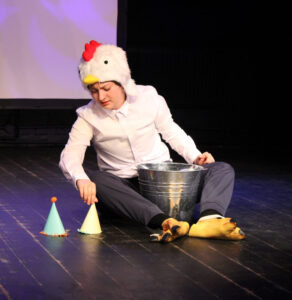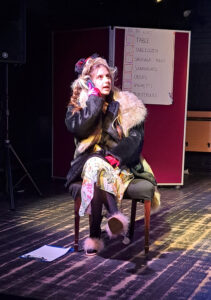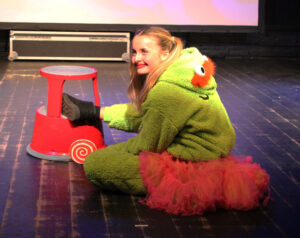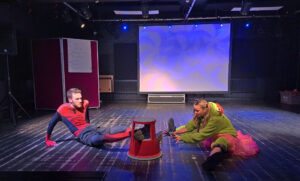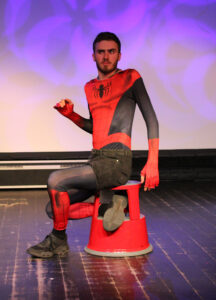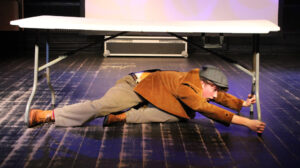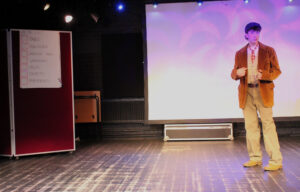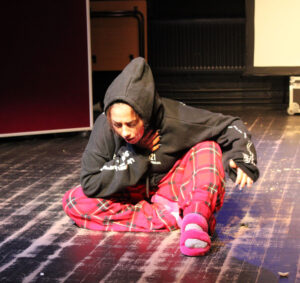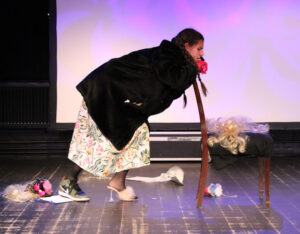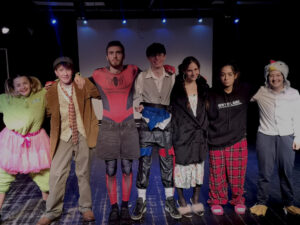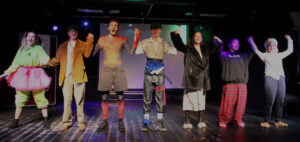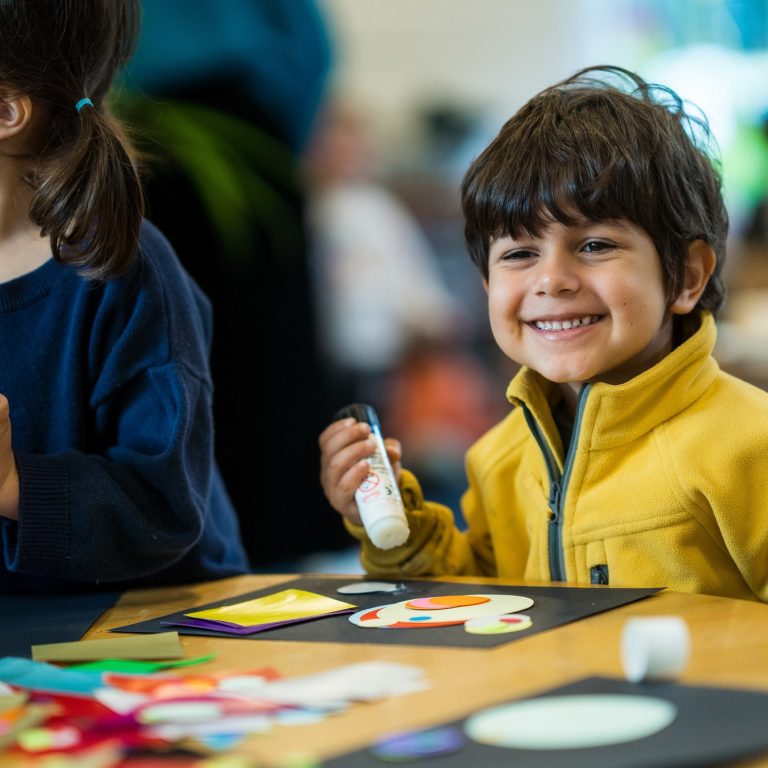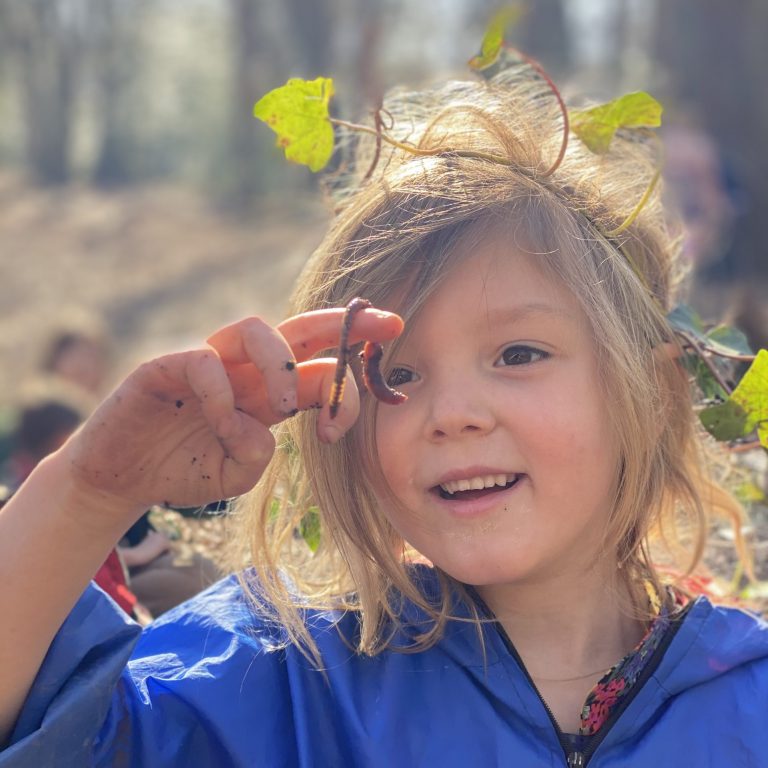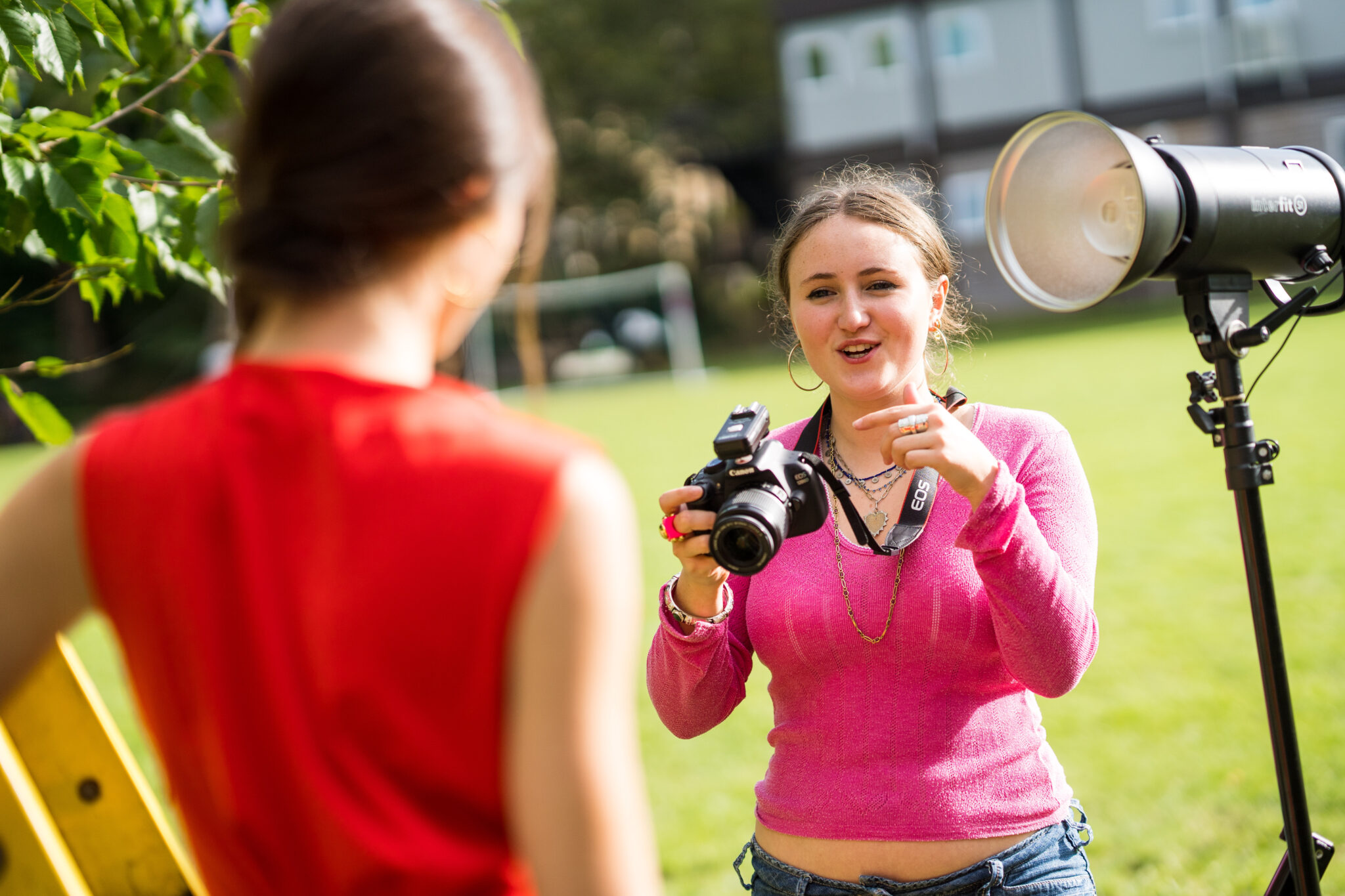“We all have an inner clown”
5th February 25
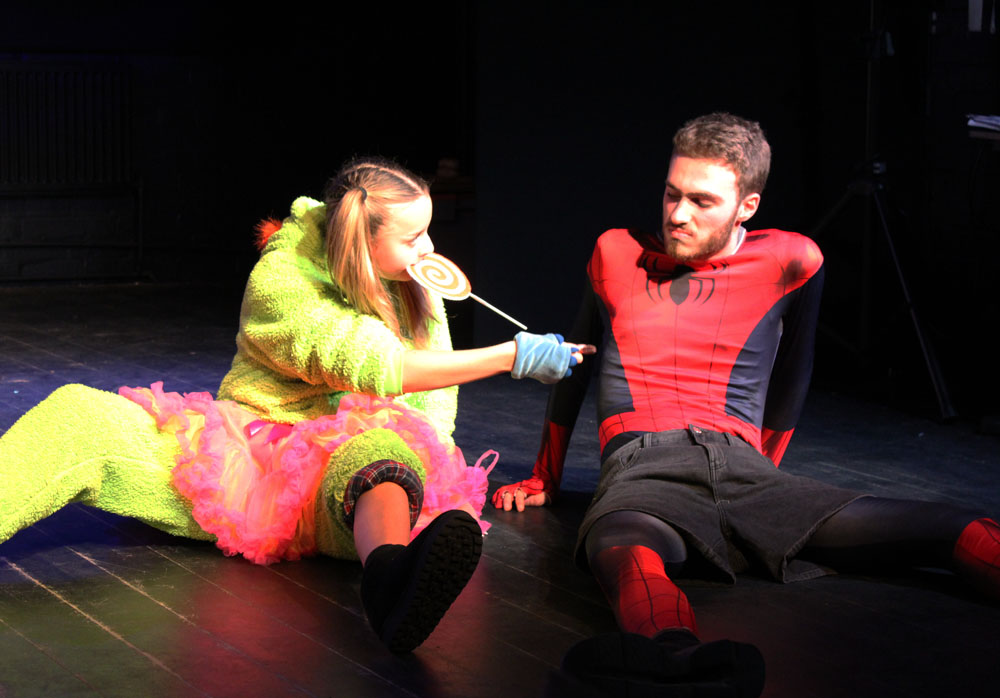
Year 12 students studying performance created a classic clowning performance which gave everyone the giggles.
Choosing to study our UAL Level 3 Extended Diploma in Performing & Production Arts means students are committed to learning a variety of different performance styles and techniques. By trying out different options, they build a rich library of knowledge and skills to draw on, not only in their assessed performances, but in their own creative practice.
Clowns have been around for thousands of years, so our Year 12 students added another page to a long history of making people laugh when they took on the challenge of creating their own clowning performances.
“One thing I really learned from this module was how to adapt to the audience,” explained Tommy who took to the stage as his clown alter-ego Retired Regent Reynolds.
“I changed things up depending on what was working. When they found something funny, I could feed off that.”
The students took inspiration from Commedia dell’arte which originated in Italy and is typified by the actors wearing masks, playing pantomime-type characters and improvising around a theme. Tommy described it as “like the film Dumb and Dumber – with characters who think they’re smart but really aren’t!”
Students worked in small groups or solo to create their own sketches from scratch – much to the delight of the audience who filled the Drama Department’s black box studio with laughter. From a farcical argument over shoes, shared lollypops, feet stuck in stools, unmanageable lists of tasks, spaghetti in pockets, giant saws and simply being stuck on the floor, they squeezed the comedy out of every moment.
“One thing we had to work on was being OK with people laughing at us. It felt quite difficult when you’re were waiting to go on and wanting to be seen to be doing a good job. But making people was literally the point here. Once you got on stage and they laughed it felt good.”
To get to the point where they were ready to take to the stage and, mostly silently, clown around, the students worked with Drama teacher Robert Messik to find their inner clown.
“I give each of the students a clown nose and a mirror and they have to look in the mirror and find the kind of clown they are,” explained Rob. “They describe it to themselves and discover what kind of clown character they have inside them. They give their clown a name and often the type of sketch they come up with is influenced by their ‘type’ of clown.”
Despite some nerves, the performances went well, and the students enjoyed the experience.
“When I came on in my ridiculous costume and everybody laughed, it was great. I smiled and enjoyed it after that.”

